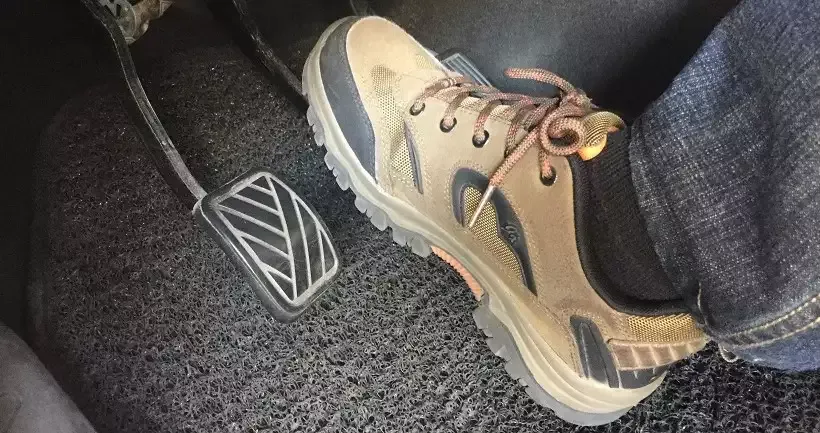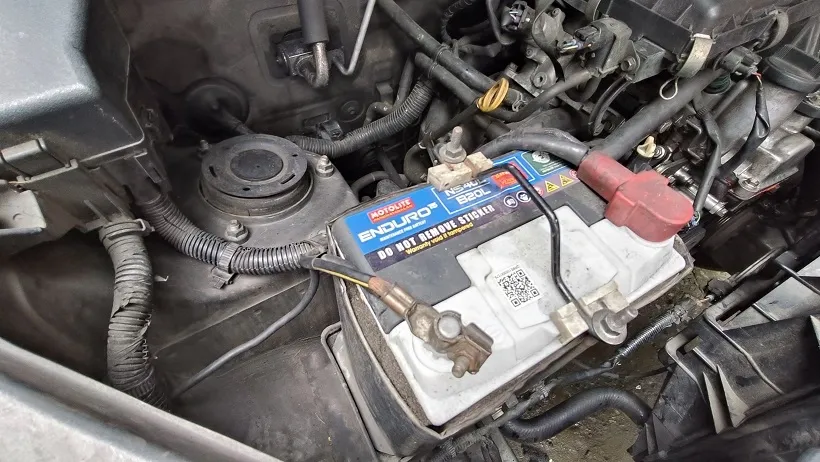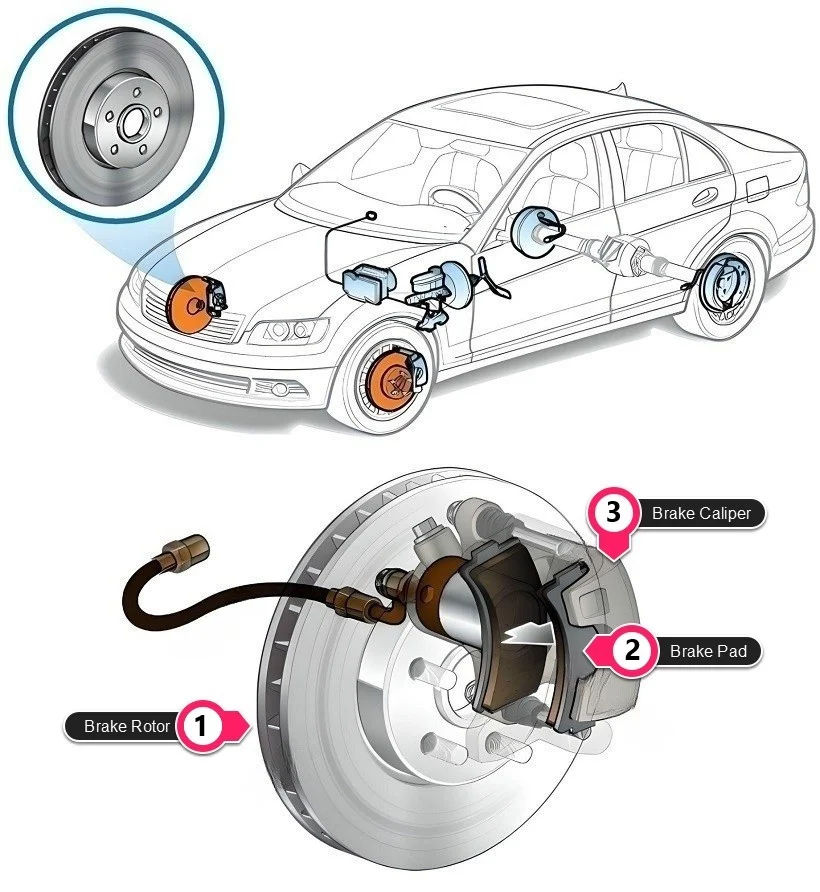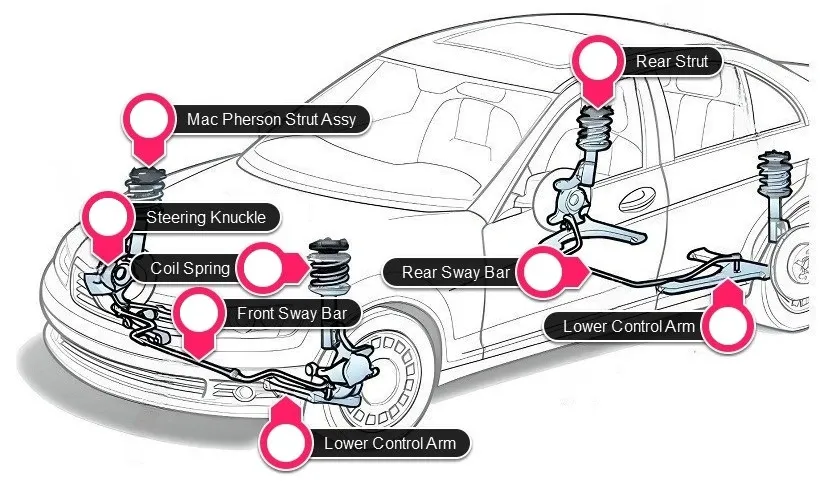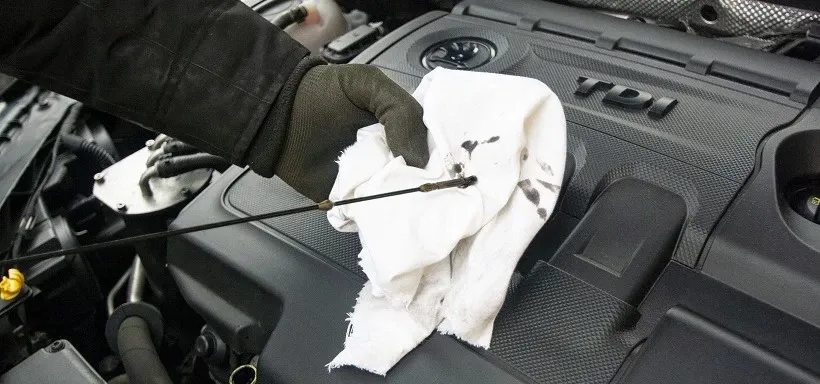Car insurance is a necessary expense for every driver, but that doesn't mean you have to overpay. With the right strategies, you can significantly reduce your car insurance premiums without sacrificing coverage. This comprehensive guide explores various ways to lower your car insurance, helping you save money while ensuring you're adequately protected on the road.
17 Effective Ways to Lower Your Car Insurance
1. Shop Around for the Best Rates. One of the most effective ways to lower your car insurance is by shopping around. Insurance companies use different methods to calculate premiums, so rates can vary significantly between providers. Here's how you can do it:
a. Compare Quotes Online. There are numerous online platforms where you can compare quotes from multiple insurers. These tools allow you to enter your details once and receive offers from various companies. This comparison shopping is a crucial step in finding the best deal.
b. Consult an Independent Insurance Agent. Independent insurance agents work with multiple companies and can help you find the best policy for your needs. They can provide personalized advice and help you navigate the complexities of car insurance.
c. Revisit Your Policy Annually. Even if you're satisfied with your current provider, it's wise to review your policy annually. Insurance rates can change due to various factors, including your driving record and changes in the insurance market. Regularly checking your options ensures you're always getting the best deal.
2. Increase Your Deductible. Your deductible is the amount you pay out of pocket before your insurance kicks in after a claim. By increasing your deductible, you can lower your monthly premium. Here's what to consider:
a. Calculate the Savings. Raising your deductible can lead to substantial savings on your premiums. For example, increasing your deductible from $500 to $1,000 could reduce your premium by 10% to 20%. However, make sure you have enough savings to cover the higher deductible in case of an accident.
b. Balance Risk and Reward. While a higher deductible can save you money, it also means you'll pay more out of pocket if you need to file a claim. Consider your financial situation and risk tolerance before making this decision.
3. Bundle Your Policies. Many insurance companies offer discounts if you purchase multiple policies from them. This is known as bundling. For example, you can bundle your car insurance with homeowners or renters insurance to receive a discount. Here's how bundling works:
a. Ask About Multi-Policy Discounts. When shopping for insurance, inquire about multi-policy discounts. Some insurers offer substantial savings when you combine your car insurance with other types of coverage.
b. Evaluate the Overall Cost. While bundling can save you money, it's essential to compare the total cost of the bundled policies with purchasing them separately. Sometimes, the combined price might still be higher than buying from different providers, even after the discount.
4. Take Advantage of Discounts. Insurance companies offer various discounts that can significantly lower your premiums. Some of the most common discounts include:
a. Safe Driver Discount. If you have a clean driving record, you're likely eligible for a safe driver discount. Insurers reward drivers who have no accidents or traffic violations on their records.
b. Low Mileage Discount. If you don't drive much, you may qualify for a low mileage discount. Insurance companies often provide lower rates to drivers who use their cars infrequently, as they are considered less risky.
c. Good Student Discount. For young drivers, maintaining good grades can lead to discounts. Many insurers offer reduced rates to students with a GPA of 3.0 or higher.
d. Defensive Driving Course Discount. Completing a defensive driving course can also lower your premiums. These courses teach safe driving techniques and may help you avoid accidents, making you a lower risk to insure.
e. Loyalty Discounts. Staying with the same insurer for several years can sometimes earn you a loyalty discount. However, this should be balanced against the potential savings from switching providers.
f. Group Discounts. Some insurers offer discounts to members of certain organizations, employers, or alumni associations. Check if any groups you're associated with have negotiated discounts with insurance providers.
5. Maintain a Good Credit Score. In many states, your credit score can impact your car insurance rates. Insurers use credit-based insurance scores to predict the likelihood of you filing a claim. Here's how to improve your credit score and potentially lower your insurance premiums:
a. Pay Bills on Time. Your payment history is a significant factor in your credit score. Paying your bills on time, including credit cards, loans, and utilities, can help improve your score over time.
b. Reduce Debt. Lowering your debt-to-income ratio can also boost your credit score. Focus on paying down high-interest debt first and avoid taking on new debt unnecessarily.
c. Monitor Your Credit Report. Regularly check your credit report for errors and discrepancies. If you find any mistakes, dispute them with the credit bureau to have them corrected. A higher credit score can lead to lower insurance premiums.
6. Choose Your Car Wisely. The type of car you drive plays a significant role in determining your insurance rates. Here's how to select a car that can help you save on insurance:
a. Consider the Cost of Insurance When Buying a Car. Before purchasing a vehicle, research its insurance costs. Some cars are more expensive to insure due to factors like repair costs, safety ratings, and theft rates. Choosing a car with a lower insurance risk profile can save you money.
b. Opt for a Safer Vehicle. Cars with advanced safety features like anti-lock brakes, airbags, and electronic stability control are often cheaper to insure. Vehicles with high safety ratings are less likely to be involved in accidents, making them a lower risk for insurers.
c. Avoid High-Performance Cars. High-performance vehicles, such as sports cars, typically come with higher insurance premiums. These cars are more expensive to repair and are often involved in accidents, leading to higher insurance costs.
7. Consider Usage-Based Insurance. Usage-based insurance (UBI) is a relatively new option that allows you to pay premiums based on your driving habits. This type of insurance can be a great way to lower your car insurance, especially if you're a safe driver.
a. How Usage-Based Insurance Works. UBI policies use telematics devices or smartphone apps to track your driving behavior, including factors like speed, braking, and mileage. If you demonstrate safe driving habits, you can earn discounts on your premiums.
b. Benefits of Usage-Based Insurance. Usage-based insurance can be especially beneficial for low-mileage drivers or those with excellent driving habits. By proving that you're a responsible driver, you can potentially reduce your insurance costs significantly.
c. Consider the Privacy Trade-Off. While UBI can save you money, it also involves sharing your driving data with your insurer. If you're concerned about privacy, weigh the benefits against the potential drawbacks.
8. Drop Unnecessary Coverage. Reviewing your car insurance policy periodically can help you identify coverage you no longer need. Dropping unnecessary coverage can lead to substantial savings.
a. Evaluate Your Coverage Needs. As your car ages, you may no longer need certain types of coverage, such as comprehensive or collision insurance. If your car's value is low, it might not make financial sense to pay for coverage that exceeds the vehicle's worth.
b. Consider Liability-Only Coverage. If your car is older and not worth much, switching to liability-only coverage can save you money. Liability insurance covers damage you cause to others but doesn't pay for repairs to your own vehicle.
c. Reassess After Major Life Changes. Life changes, such as paying off your car loan or moving to a safer neighborhood, can affect your insurance needs. Reassess your coverage after such events to ensure you're not paying for unnecessary protection.
9. Pay Your Premiums Annually. While many drivers opt for monthly payments, paying your car insurance premiums annually can save you money. Here's how:
a. Avoid Monthly Service Fees. Many insurance companies charge service fees for monthly payments. By paying your premium in full each year, you can avoid these extra charges.
b. Potential Discounts for Annual Payments. Some insurers offer discounts for drivers who pay their premiums annually. This discount can add up to significant savings over the life of your policy.
c. Budgeting for an Annual Payment. If you're considering switching to annual payments, make sure you budget accordingly. Setting aside money each month can help ensure you have the funds available when it's time to pay your premium.
10. Keep Your Driving Record Clean. Your driving record is one of the most critical factors in determining your car insurance rates. Maintaining a clean driving record can help you secure lower premiums over time.
a. Avoid Traffic Violations. Traffic violations, such as speeding tickets or running red lights, can lead to higher insurance premiums. Obeying traffic laws and driving responsibly can help you avoid these costly penalties.
b. Take a Defensive Driving Course. As mentioned earlier, completing a defensive driving course can not only earn you a discount but also reinforce safe driving habits. These courses can be particularly beneficial if you have minor infractions on your record.
c. Accident Forgiveness Programs. Some insurance companies offer accident forgiveness programs, which prevent your first accident from increasing your premium. If you qualify for such a program, it can protect your rates even if you're involved in a minor accident.
11. Install Anti-Theft Devices. Installing anti-theft devices in your car can reduce the risk of theft, leading to lower insurance premiums. Here’s how:
a. Types of Anti-Theft Devices. Common anti-theft devices include steering wheel locks, car alarms, GPS tracking systems, and immobilizers. These devices can deter thieves and make your car less appealing as a target.
b. Notify Your Insurer. If you've installed anti-theft devices, be sure to inform your insurance company. Many insurers offer discounts for cars equipped with these devices, as they reduce the likelihood of theft.
c. Consider Comprehensive Coverage. If you live in an area with a high rate of car theft, maintaining comprehensive coverage with anti-theft discounts can provide peace of mind while keeping your premiums manageable.
12. Maintain Continuous Coverage. Lapses in car insurance coverage can lead to higher premiums when you renew your policy or switch providers. Here's why continuous coverage matters:
a. Insurers View Gaps as Risky. Insurance companies view gaps in coverage as a risk factor. They may assume you're more likely to file a claim if you've had periods without insurance, leading to higher rates.
b. Avoid Penalties and Fines. In many states, driving without insurance is illegal and can result in fines, license suspension, and higher premiums when you reinstate your coverage. Maintaining continuous coverage ensures you avoid these penalties.
c. Consider Non-Owner Insurance. If you don't currently own a car but plan to drive occasionally, consider non-owner car insurance. This type of policy provides liability coverage and keeps you insured, preventing a lapse in coverage.
13. Choose the Right Coverage Limits. Choosing the right coverage limits is essential for balancing cost and protection. Here’s how to determine the appropriate limits for your needs:
a. Understand State Requirements. Each state has minimum insurance requirements, which typically include liability coverage for bodily injury and property damage. However, the minimum required limits might not be enough to cover you in a severe accident.
b. Evaluate Your Assets. Consider your assets, such as your home, savings, and investments, when choosing your coverage limits. Higher limits can protect your assets in the event of a costly accident.
c. Consider Umbrella Insurance. If you have significant assets, consider purchasing an umbrella insurance policy. This coverage provides additional liability protection beyond your standard car insurance, often at a relatively low cost.
14. Review Your Policy After Life Changes. Life events can significantly impact your car insurance needs and premiums. It's essential to review your policy after any major changes to ensure you're adequately covered without overpaying.
a. Getting Married. Married drivers often qualify for lower insurance rates than single drivers. If you get married, notify your insurer to see if you qualify for a discount.
b. Moving to a New Location. Your location affects your car insurance rates. Moving to a safer neighborhood with lower crime rates or less traffic can result in lower premiums. Conversely, moving to a higher-risk area might increase your rates.
c. Changing Jobs. Your daily commute impacts your car insurance. If you switch jobs and have a shorter commute or start working from home, you may qualify for a low mileage discount.
d. Adding a Teen Driver. Adding a teen driver to your policy can increase your premiums. However, you can offset some of the cost by taking advantage of discounts for good students, driver training courses, and safe driving programs.
15. Consider Pay-Per-Mile Insurance. Pay-per-mile insurance is an excellent option for drivers who don't use their cars frequently. This type of insurance charges you based on the number of miles you drive, which can be a cost-effective option for low-mileage drivers.
a. How Pay-Per-Mile Insurance Works. Pay-per-mile insurance typically includes a base rate plus a per-mile charge. If you drive less, you pay less, making it a great way to lower your car insurance costs.
b. Benefits of Pay-Per-Mile Insurance. This type of insurance is ideal for people who drive infrequently, such as retirees, remote workers, or city dwellers who primarily use public transportation. By only paying for the miles you drive, you can save a significant amount on your insurance.
c. Compare Pay-Per-Mile vs. Traditional Insurance. Before switching to pay-per-mile insurance, compare the overall cost with your current policy. In some cases, traditional insurance may still be more cost-effective, especially if you drive regularly.
16. Opt for Paperless Billing and Auto-Pay. Many insurance companies offer discounts for customers who choose paperless billing and auto-pay options. These small changes can lead to modest savings on your premiums.
a. Paperless Billing. Switching to paperless billing reduces the administrative costs for your insurer, and they may pass some of these savings onto you in the form of a discount.
b. Auto-Pay Discounts. Setting up automatic payments ensures your premiums are paid on time, which can also qualify you for a discount. Plus, it helps you avoid late fees and potential lapses in coverage.
c. Combine Paperless Billing and Auto-Pay. Combining both paperless billing and auto-pay can maximize your discounts. Check with your insurer to see if they offer these savings options.
17. Drive a Car That’s Cheaper to Insure. The car you drive has a direct impact on your insurance premiums. Some cars are cheaper to insure than others, depending on factors like safety ratings, repair costs, and the likelihood of theft.
a. Research Insurance Costs Before Buying. Before purchasing a new car, research its insurance costs. Some vehicles, such as economy cars or sedans, tend to have lower insurance premiums compared to luxury or sports cars.
b. Consider the Total Cost of Ownership. When buying a car, consider the total cost of ownership, including insurance. A car with a lower purchase price might have higher insurance costs, so factor in all expenses when making your decision.
c. Opt for a Vehicle with Lower Repair Costs. Cars with lower repair costs generally have lower insurance premiums. Vehicles with readily available and affordable parts can reduce the overall cost of insuring the car.
Final thoughts
Lowering your car insurance doesn't have to be a daunting task. By following these 17 strategies, you can find ways to reduce your premiums while still maintaining the coverage you need. From shopping around and increasing your deductible to taking advantage of discounts and choosing the right car, there are numerous ways to lower your car insurance costs. Regularly reviewing your policy and staying informed about potential savings opportunities can help you keep more money in your pocket while ensuring you're protected on the road.
Remember, the key to finding the best deal is to stay proactive. Continually assess your insurance needs, explore available discounts, and don't be afraid to switch providers if it means getting a better rate. With a little effort and attention to detail, you can successfully lower your car insurance premiums and enjoy peace of mind knowing you're covered at a price that fits your budget.
Want more videos all about auto?
Subscribe to our YouTube channel👉Cartech Home




